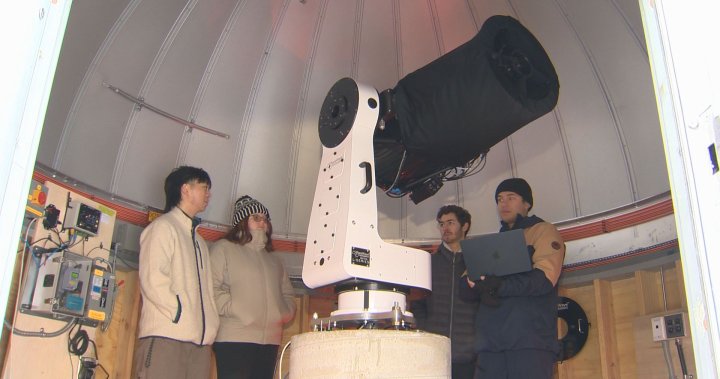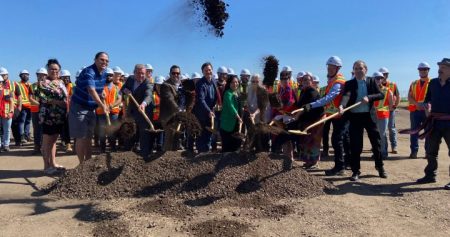The University of Manitoba has unveiled a groundbreaking new astronomical facility just south of Winnipeg, offering students an unprecedented opportunity to engage in hands-on observational astronomy. The Glenlea Remote Observatory, spearheaded by graduate student Ryan Wierckx, houses a state-of-the-art telescope capable of 360-degree rotation, significantly outpacing the speed and versatility of existing telescopes at the university. This advanced functionality allows students to track dynamic celestial objects like comets and satellites, expanding the scope of their research and learning. Crucially, the observatory’s remote operation eliminates the need for students to be physically present on-site, overcoming the constraints of weather and travel, and democratizing access for all students regardless of their physical location. This innovative approach allows students to control the telescope and capture raw data from the comfort of their own computers via a secure network connection.
The construction of the Glenlea Remote Observatory marks a significant advancement in astronomy education at the University of Manitoba. Traditionally, students relied primarily on pre-processed images from sources like the Hubble Space Telescope and NASA, limiting their understanding of the intricate data acquisition and processing pipeline. This new facility empowers students with the ability to collect their own raw data from the night sky, providing a comprehensive learning experience that encompasses the entire process, from observation planning and telescope control to image processing and analysis. Graduate student Charles Lee emphasizes the educational value of this hands-on approach, highlighting the opportunity for students to develop essential skills in image editing and calibration, ensuring data accuracy and integrity. This experience bridges the gap between theoretical knowledge and practical application, preparing students for future careers in astronomy and related fields.
The Glenlea Remote Observatory’s remote operation capabilities represent a paradigm shift in astronomical observation. No longer confined to on-site presence, students can now conduct observations remotely, overcoming the limitations of weather conditions and travel logistics. This flexibility allows for more frequent and consistent data collection, maximizing the observatory’s scientific output and providing students with ample opportunities to hone their observational skills. The remote access feature also fosters collaboration, allowing students to work together on projects regardless of their geographical location, promoting teamwork and knowledge sharing. This seamless integration of technology and education creates a dynamic learning environment where students can actively participate in cutting-edge research.
The observatory’s primary instrument, the advanced rotating telescope, offers a distinct advantage over traditional stationary telescopes. Its rapid slewing capabilities allow for efficient tracking of fast-moving celestial objects, opening up new avenues for research into transient phenomena such as comets, asteroids, and near-Earth objects. The telescope’s wide field of view also facilitates surveys of large areas of the sky, enabling the discovery of new celestial objects and the study of extended astronomical structures. This enhanced observational power provides students with a powerful tool for exploring the universe and contributing to the advancement of astronomical knowledge.
The Glenlea Remote Observatory is currently undergoing final preparations before becoming fully operational. The team awaits clear skies to conduct essential calibration procedures, ensuring the telescope’s precise positioning and accurate data acquisition. Once calibrated, the observatory will commence its scientific mission, collecting raw data from the cosmos and providing students with an unparalleled opportunity to engage in authentic astronomical research. This hands-on experience allows students to develop crucial skills in data analysis, interpretation, and scientific communication, preparing them for future careers in astronomy, astrophysics, and related fields.
Assistant Professor Tyrone Woods highlights the transformative impact of the Glenlea Remote Observatory on the student learning experience. He emphasizes that students now have the opportunity to gain professional-level astronomy experience during their undergraduate and graduate studies, rather than having to wait until after graduation. The observatory provides a platform for students to engage in cutting-edge research, studying phenomena such as supernovae and variable stars, gaining insights into their distances, evolution, and the fundamental properties of the universe. This early exposure to professional-level research fosters a deeper understanding of astronomical concepts and cultivates essential skills in critical thinking, problem-solving, and scientific inquiry. The Glenlea Remote Observatory promises to be a valuable asset for the University of Manitoba, contributing significantly to the advancement of astronomical education and research in the years to come.










